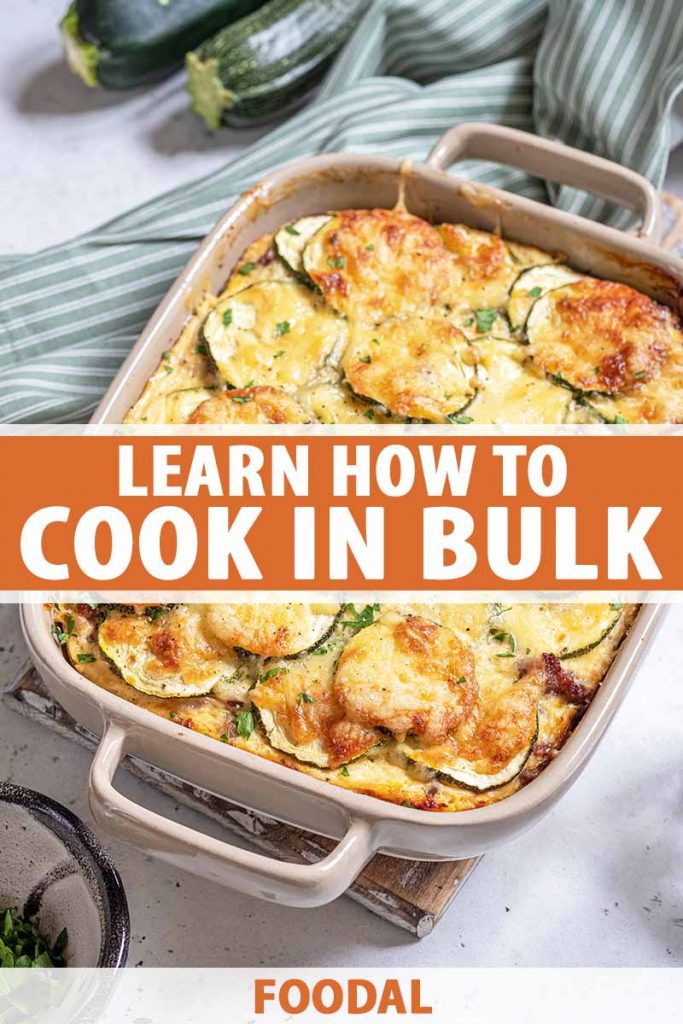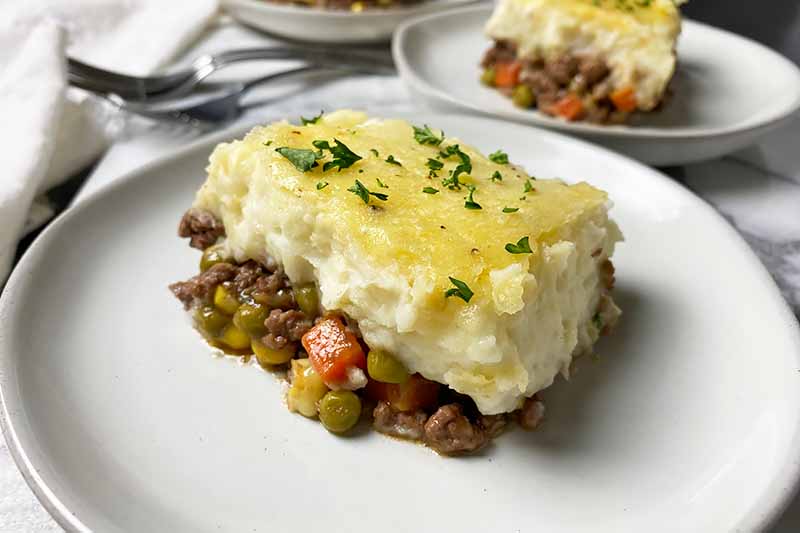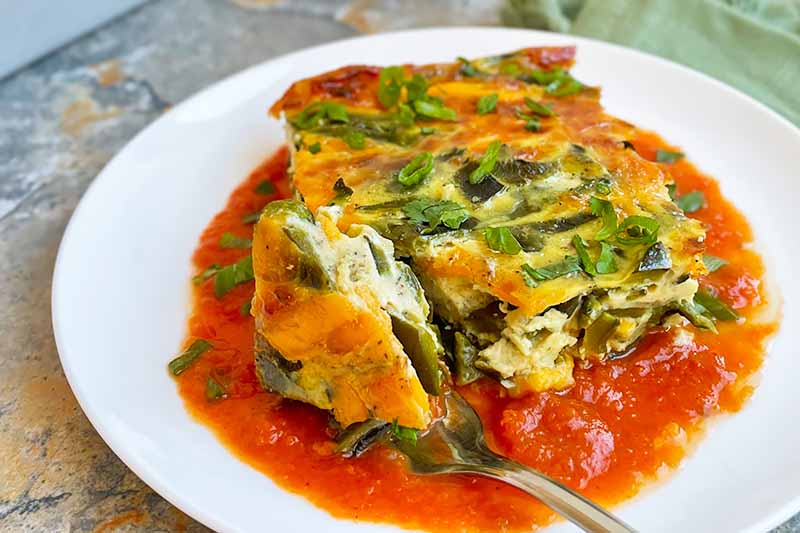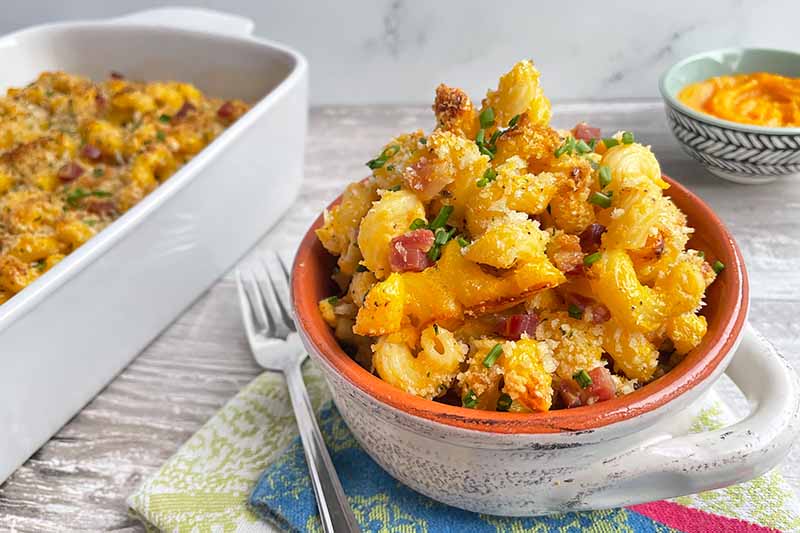If you feel like cooking at home is too expensive, too time-consuming, or too difficult, let me introduce you to cooking in bulk.
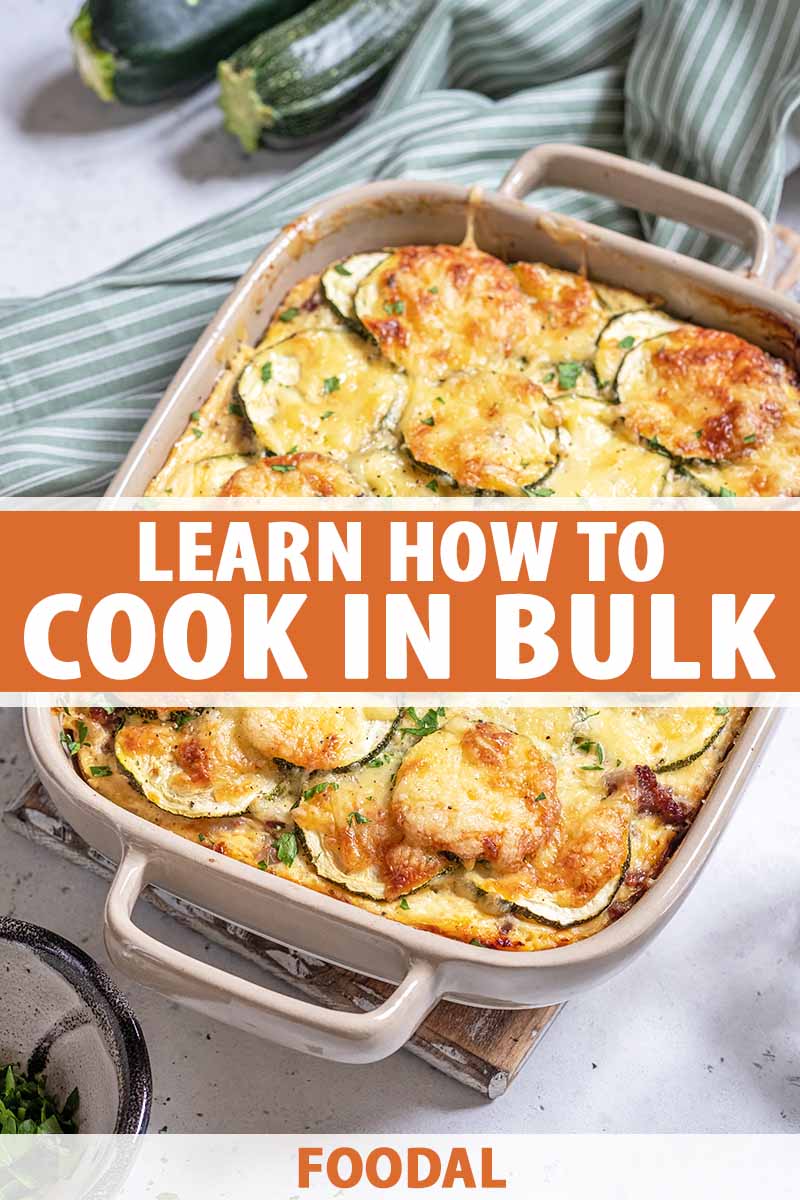
Also commonly referred to as batch cooking, this method of meal prep is essentially just making a big batch of a few ingredients that can then be mixed and matched to create different meals throughout the week.
It can also entail doubling or tripling a recipe so you can freeze individual portions that can easily be thawed and reheated later on, for a convenient lunch or dinner – or even breakfast.
Here’s everything we’re going to cover:
What You’ll Learn
If you’re curious about learning how to cook in bulk, keep reading for tips and tricks, along with a few recipe ideas to get you started!
Benefits of Cooking in Bulk
While it can take a few tries to get the hang of it, once you’re used to cooking in big batches, you’ll find that it can save you time and money. Plus, using these methods can also make it easier to eat healthy!
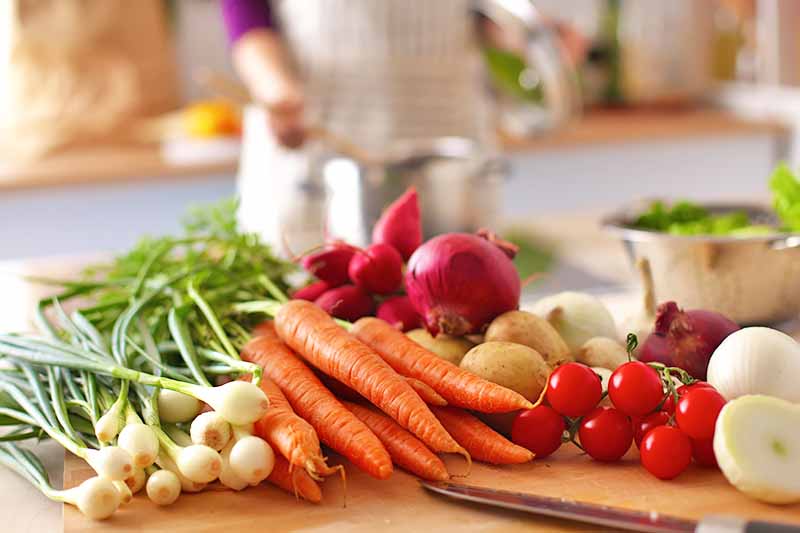
Let’s go over some of the benefits:
1. It Saves Time
With cooking in bulk, you set aside an hour or two one night a week to prep and cook large batches of just a few ingredients. I recommend Sunday, or a day when you tend to have a good chunk of free time available.
As a result, not only are you cooking less throughout the week, but you’re also able to cook more efficiently.
For example, you can have all your grains bubbling away on the stove while your chicken and vegetables are roasting together in the oven.
Another time-saving aspect of this process is that with bulk cooking, it’s easier to make a grocery list and get everything you need for the week in one trip rather than having to go back to the store throughout the week to pick up more food.
Plus, if you also portion out your meals on the same day you cook them, all that’s left to do is to grab a container out of the fridge and reheat it for a minute or two in the microwave when you’re ready to eat.
It’s also a strategic option for when you are planning a big dinner party, and have so many other responsibilities to handle!
2. It’s Budget-Friendly
Cooking in bulk also means buying in bulk, which is usually cheaper than buying smaller amounts of a bunch of different foods on multiple trips to the store.
And while shopping at discount price clubs like Costco or Sam’s is an easy way to do this, you can also save money by buying multiple things at once if they’re on sale, visiting bulk bins at the health food or grocery store, and shopping online.
Preparing your meals in advance can also indirectly save you money by leading you to purchase less takeout and restaurant meals. I find this is particularly relevant for lunches during the work week.
While spending ten dollars on lunch doesn’t sound like much in the grand scheme of things, if you buy lunch out every workday, that adds up to $2,500 per year.
3. It’s Easier to Eat Healthy
Preparing your meals ahead of time is a great way to stick with healthier eating goals.
Not only do you have total control over how much oil or salt you’re using, you’re also less likely to order fast food or delivery if you know you already have satisfying meals that are prepped and ready to eat in the fridge.
Plus, if you take the extra step of portioning out your meals for the week in advance, you won’t have to worry as much about overeating.
Helpful Kitchen Tools
Cooking in bulk doesn’t have to be complicated, or require any fancy appliances. However, investing in at least one small cooking appliance can make the process even easier, such as a slow cooker, electric pressure cooker like an Instant Pot, or rice cooker.
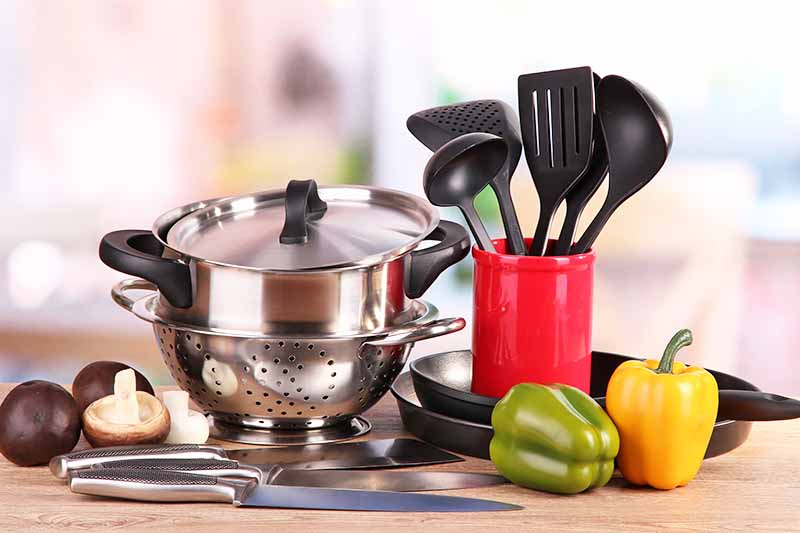
Here are some tools that I recommend for batch cooking.
For Prep:
- At least two cutting boards
- Chef’s knife
- Measuring cups and spoons
- Can opener
- Vegetable peeler
- Colander
- Spatula, whisk, spoon, and tongs
- Two or three mixing bowls in different sizes
- Food processor
For Cooking:
- Meat thermometer
- Two large rimmed baking sheets
- Large and medium-sized cooking pots
- Large nonstick skillet
- Slow cooker, electric pressure cooker, and/or rice cooker
For Storage:
- Plenty of food storage containers
- Freezer storage bags
I like glass mixing bowls with lids, as they’re easy to wash and can also be used to store leftovers. Glass storage containers are my preferred choice as well, since they’re easy to wash and you can see what’s inside.
Rimmed baking sheets come in handy for roasting vegetables and cooking meat, and it’s a good idea to have at least two cutting boards for food safety, so you can keep vegetables and uncooked ingredients separate from raw meat and fish.
Again, all of the appliances listed above are optional, but I highly recommend using at least one in your meal prep if you can.
While an electric pressure cooker, slow cooker, or rice cooker will save time and save you from having to hover over the stove, a food processor makes chopping and shredding vegetables faster and easier, as well as pulsing bread into breadcrumbs, and making sauces and soups.
How to Cook in Bulk
Cooking in bulk can apply to cooking large batches of several types of foods that can be mixed and matched, or making large amounts of one or two mixed dishes, like lasagna or other types of casseroles.
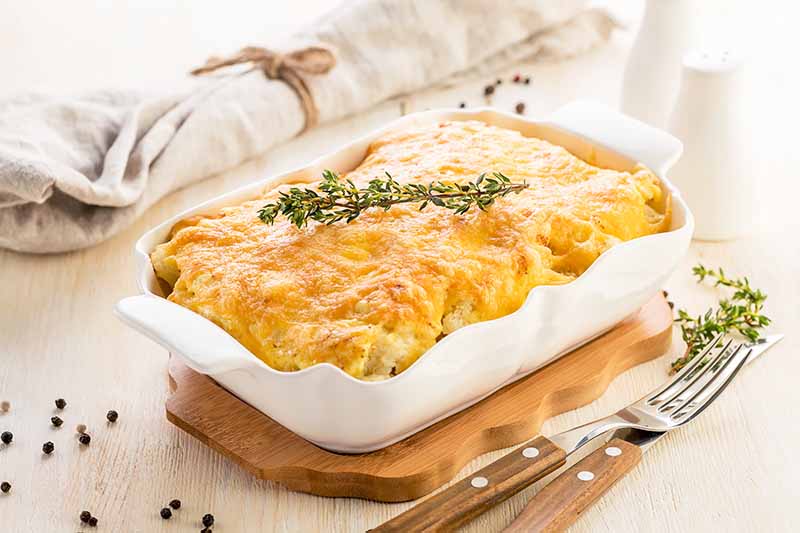
We’ll go over the details of these options more thoroughly later in the article. Regardless of which method or variety suits you, there are a few key steps to start with:
Step 1 – Plan Your Meals
The first step is to figure out how many meals you want to make for the week, and which recipes to use. This will depend in part on whether you decide to do the mix-and-match style of batch cooking, or if you prefer to make one or two larger mixed dishes instead.
For inspiration, we have lots of recipes that are perfect for batch cooking on Foodal. We even have a great guide for making snack packs. I also like to check out Pinterest, and do a search on Google for new bulk cooking recipe ideas that feature ingredients that are on sale for the week, seasonal items, and ingredients that I already have stocked in my pantry.
For the mix-and-match style, grain bowls, sheet pan meals, and pasta dishes usually work really well. Lasagna, enchilada casseroles, chili, and soup work best for making large batches of mixed dishes.
Step 2 – Make Your List and Go Shopping
Once you know what you want to cook, it’s time to put it down on paper.
I like to group foods according to the area of the grocery store they’re found in. This way, you won’t have to waste any time walking back and forth across the grocery store looking for items.
It’s also smart to stick to your list so you’re not buying an excess amount of food that might go to waste.
Also keep an eye out for staple items that are on sale, such as olive oil, spices, canned goods, and grains.
And remember to shop your own pantry first – you can save money by using up the rice, beans, lentils, and other pantry ingredients that you already have on hand, as well as frozen fruits, vegetables, and grains that you have stored in the freezer.
Step 3 – Prep and Cook
Now that you have your food, you’re ready to get to work! Start by picking a day when you’ll have at least 1 to 2 hours to spend cooking (and doing dishes).
For me, Sundays are usually best, as I typically have some free time and I can put on a movie or football game and watch while I prep and cook.
Batch Cooking Methods
How you go about prepping will depend on what type of bulk cooking you plan to do. Time to go over the specifics of each method!
Mix-and-Match Meals
If you want to be able to enjoy a variety of foods and flavors throughout the week, but you’re trying to keep your grocery list on the shorter side, making mix-and-match meals is the way to go.

Essentially, what this means is cooking one or two grains and proteins, as well as a bunch of veggies, and mixing together a few sauces.
Once you have them all prepared, you can then mix and match to create different meals each day.
While many of the base ingredients will be the same, the key is having a few different sauces, cheeses, and/or spice blends ready to give each meal a different flavor profile.
My go-to formula is:
- 2 Proteins: beef, chicken, tofu, chickpeas, fish, etc.
- 2 Carbs: brown rice, quinoa, farro, whole wheat pasta, whole wheat tortillas, sweet potatoes, etc.
- A Few Sauces: peanut sauce, barbecue, teriyaki, marinara, green curry, salsa, etc.
- A Variety of Vegetables: a mix of leafy greens, roasted root vegetables, etc.
In a pinch, I’ll just buy a big bag of fresh mixed vegetables. Otherwise, I’ll pick up whatever’s in season or on sale.
Once you decide which options you want to choose from in each category, you’re going to cook and prep a big batch of each. Determining how much you need to buy and prepare will depend on the number of meals you want to prep in advance that week, and the number of servings for each meal that you’ll need.
From there, you can either store the individual components separately and mix and match throughout the week, or go ahead and pre-portion them out on Sunday so all you have to do is grab one container out of the fridge for each meal.
Mix-and-Match Menu Example:
- Proteins: tofu (½ cup per person per meal) and chicken breast (3-4 ounces per person per meal)
- Grains: farro (½ cup cooked per person per meal) and sweet potatoes (½ sweet potato per person per meal)
- Sauces: barbecue sauce, salsa, and homemade peanut sauce
Note that portion sizes will vary depending on your personal nutritional needs.
Mix-and-Match Prep Sample Menu Cooking Instructions:
Step 1 – Start with the Grains
I like to cook my farro on the stove, but you could use a rice cooker or Instant Pot for this as well. For the sweet potatoes, I like to roast them in the oven, but they can also be steamed or microwaved.
Step 2 – Cook Vegetables and Proteins
Chop the veggies, and toss them in oil, salt, and pepper. Place the vegetables in a single layer on a baking sheet and roast in the oven.
For the protein, I like stir-frying both the tofu and chicken on the stove, but you could also roast them along with the vegetables. I recommend using two separate baking sheets for this, in case the protein takes longer to cook than the vegetables.
Step 3 – Prepare Uncooked Items and Start Cleanup
While everything is cooking, this is a good time to drain and rinse any canned beans, if you’re using them. I also use this time to make my sauces (in this case, the peanut sauce) and start doing dishes.
Step 4 – Cool, Add Extras, and Store
Once everything is cooked, you can store each food type individually, or go ahead and pre-portion the meals.
Uncooked items like cheese, avocado slices, yogurt or sour cream, and spice blends should be added either when portioning or just before eating.
Wait until ingredients have cooled to room temperature before sealing and storing in the fridge or freezer.
Mixed-Dish Meals
Bulk cooking can also be applied to mixed-dish meals, such as enchiladas, chili, and casseroles.

For these, you can cook a big batch of one or two recipes in one day, and then freeze them in individual portions so you will have pre-cooked meals on hand that just have to be thawed and reheated before eating.
This is a great way to take advantage of ingredients that are on sale at the store, or items that you already have at home that are going to expire.
For example, if ricotta is on sale, then I’ll often make two trays of lasagna: we eat one that week, and I cut up the other and store individual slices in the freezer to eat later.
Here are my tips for cooking large batches of mixed-dish meals:
- Try to choose recipes with some ingredients that overlap if you will be making more than one thing, to cut down on your investment of time and money.
- Slightly undercook vegetables and pasta, as they can get overly soft after being stored and then reheated.
- Be cautious when doubling or tripling quantities of spices and other seasonings, as it’s easy to over-season. Instead, start moderately, taste, and add more as needed.
- Cool completely before storing.
- Divide into smaller portions so you aren’t forced to reheat the same foods over and over again if you can’t eat something all at once. When frozen, smaller portions will also thaw much faster than whole casseroles or big batches containing liquid ingredients.
- When freezing, make sure to use an airtight container or freezer bag, as exposure to air can cause freezer burn.
- Label containers with the name of the recipe, date you made it, and any reheating instructions.
- Foods that are fried, contain fruits or vegetables with a high water content (like cucumber or watermelon), or have a mayonnaise or yogurt-based sauce tend not to freeze or reheat well.
Batch cooking for mixed-dish meals is also a great option for when you have a lighter week ahead and you have time to prep a few freezer-friendly meals to store for future weeks, when you might not have as much time available for cooking and meal prep.
Some of my favorite recipes to make using this method include chili made in the slow cooker, vegetarian lasagna, slow cooker vegetarian white bean chili with butternut squash, and stacked vegetable enchiladas.
Large Batch Breakfasts and Brunches
Breakfast is another meal where making large batches and multiple bulk items at a time will serve you well. Whether you’re planning ahead for the week, or serving a crowd at a weekend brunch get-together, the methods and tips described throughout this article will come in handy.
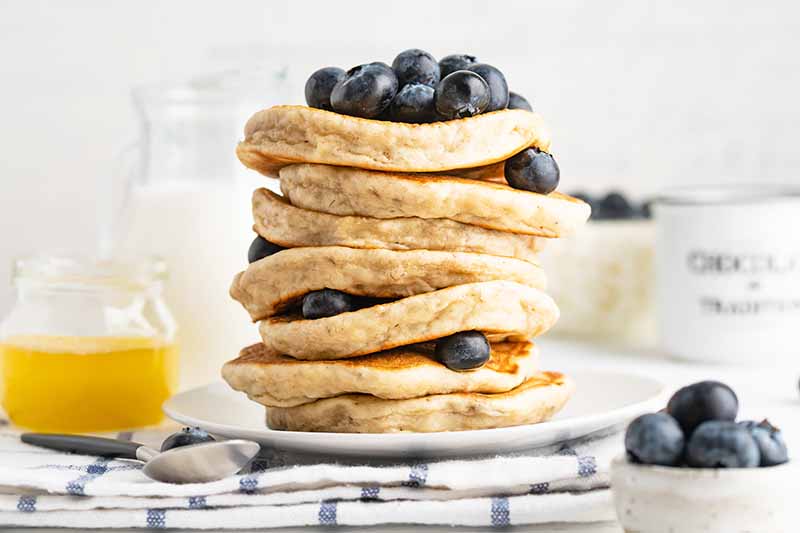
I’ve found that pancakes and muffins are especially good for making a big quantity and freezing in individual portions. To reheat, simply heat them up in the microwave for 20 seconds or so.
Waffles can also work, but I recommend using ones that are made with a sturdier flour like whole wheat or buckwheat as they won’t get as mushy upon reheating. I also encourage reheating them in a toaster or toaster oven rather than the microwave, for a crisper texture.
Are you more of a savory-seeker at breakfast? Breakfast burritos can also freeze well. Just make sure to fully cook all of the ingredients first, and let the wraps cool before freezing.
Big-batch casseroles like an overnight egg bake or a French toast bake make nice options for serving bigger groups. Or you could poach as many eggs as you’ll need and whip up a blender hollandaise for homemade eggs Benedict.
Go from Big Batch Beginner to Meal Prep Pro
Now that I’ve filled you in on all of the options and shared my tips as an experienced meal-prepper, it’s time for you to make a game plan, get that shopping list ready to go, carve out a few free hours, and get cooking.
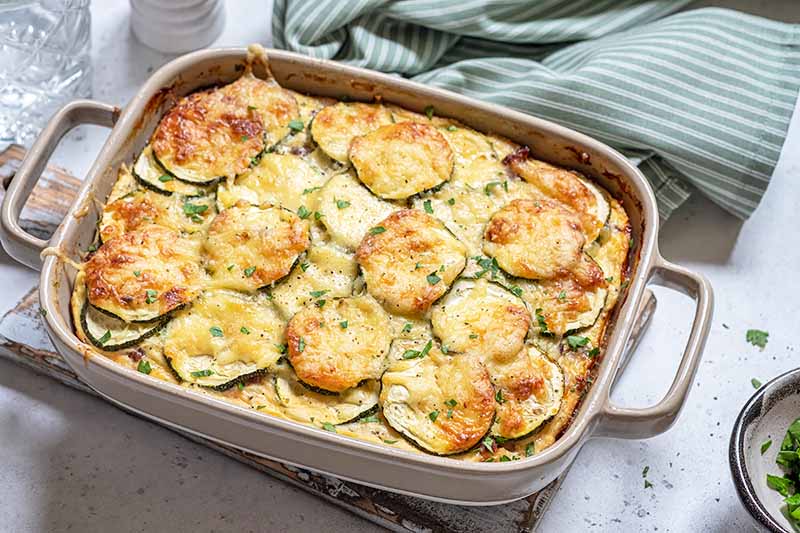
Whether you’re making lunches in advance for the work week ahead, planning meals that you can pop in the freezer and reheat when dinnertime rolls around, or you have a big event coming up and you know you’ll thank yourself later if breakfast for the week is already prepared, all of these methods will help you to streamline the process, save time, and save money as well – all while enjoying delicious homemade meals.
Do you use batch cooking techniques to prep your meals for the week? We’d love to hear about your go-to recipes and tips in the comments below!
For even more tips that will improve your technique and save you time and money in the kitchen, check out these articles next:
- Kitchen Composting 101
- How to Break Down a Whole Chicken Easily
- 5 Things to Know Before Heading Out to the Farmers Market
Photos by Kelli McGrane, © Ask the Experts, LLC. ALL RIGHTS RESERVED. See our TOS for more details. With additional writing and editing by Allison Sidhu. Uncredited photos: Shutterstock.
Nutritional information derived from a database of known generic and branded foods and ingredients and was not compiled by a registered dietitian or submitted for lab testing. It should be viewed as an approximation.
About Kelli McGrane, MS, RD
Kelli McGrane is a Denver-based registered dietitian with a lifelong love of food. She holds undergraduate and master’s degrees in nutrition science from Boston University. As a registered dietitian, she believes in the importance of food to nourish not only your body, but your soul as well. Nutrition is very personal, and you won’t find any food rules here, other than to simply enjoy what you eat.

